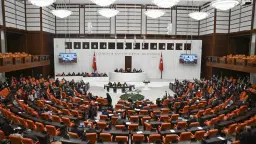İlgili Yayın Dosyaları

Evaluation Note / Kamal Malhotra
Recent History and the Changed Context
The rapid fall of the Assad government in Syria after less than 2 weeks of military battle between November 27 and December 8, 2024, marked the end of two major episodes in modern Syrian history:
Sixty-one years of strongman dynastic rule by a family from the minority Shia-linked Alawite community in a predominantly Sunni Muslim country; and,
the end of more than 13 years of civil war which started after the failed Arab Spring uprising by students and other protestors in 2011.
During the Arab Spring, Saudi Arabia, had tried to exploit the situation by engineering a “regime change” – an attempt which failed because the US under then President Obama did not support it. More recently, Assad seemed increasingly in control of Syria (except for Idlib province adjacent to the Turkish border in the north-west of the country), leading to his being rehabilitated in the Arab mainstream between 2021-23.
In 2019, Assad, attempted to take back Idlib province by means of a series of military offensives by the Syrian Armed Forces in 2019-20 with the support of Russia, Iran and Hezbollah which were named “Dawn of Idlib 1 and 2” and lasted just under a year. The brutal offensives, where the use of chemical weapons was alleged by the US, (DailySabah. 22 May 2019. “Assad regime likely used chemical weapons in Syria’s Idlib”) saw Russian backed pro-Syrian government forces clash with Turkish backed opposition groups, directly impacting 3 million people in the province, leaving close to one million civilians displaced. (UN News. 17 May 2019.” Risk Grows of ‘catastrophic humanitarian fallout’).
You may read evaluation note from here.
This note was published in Global Resilience Publishing on 30 January 2025.




